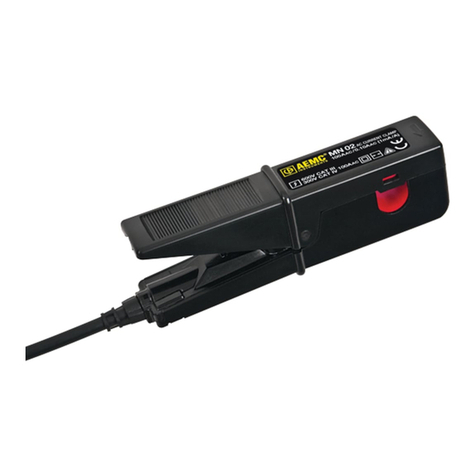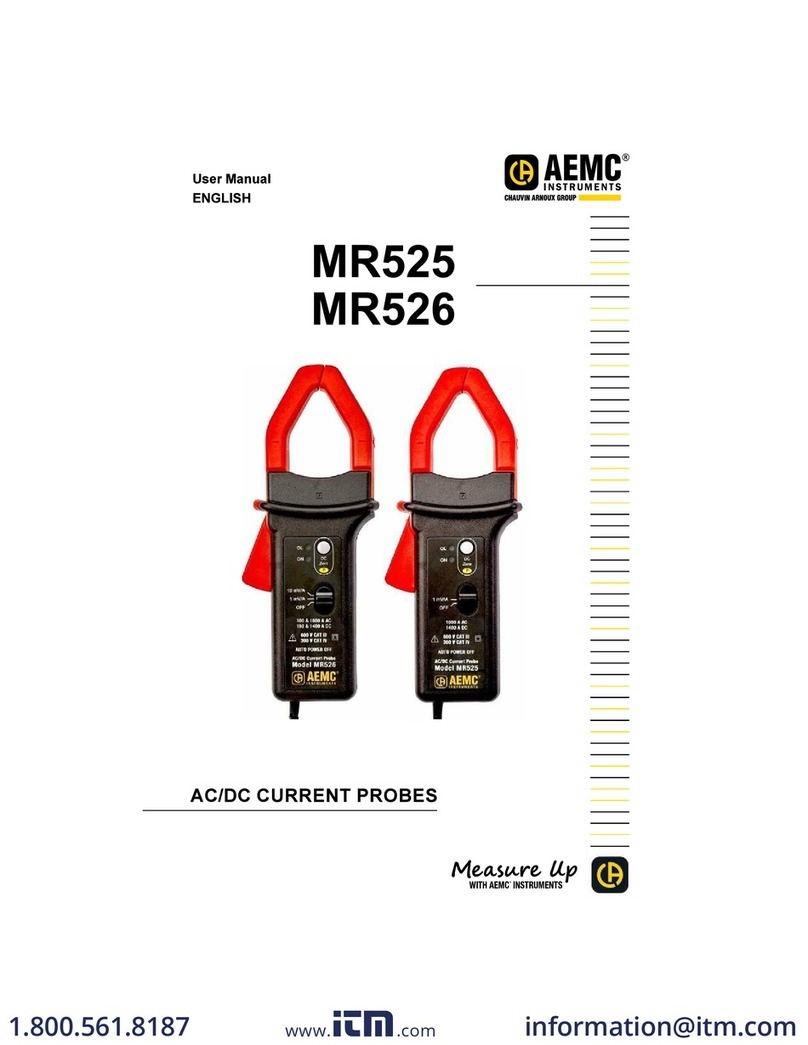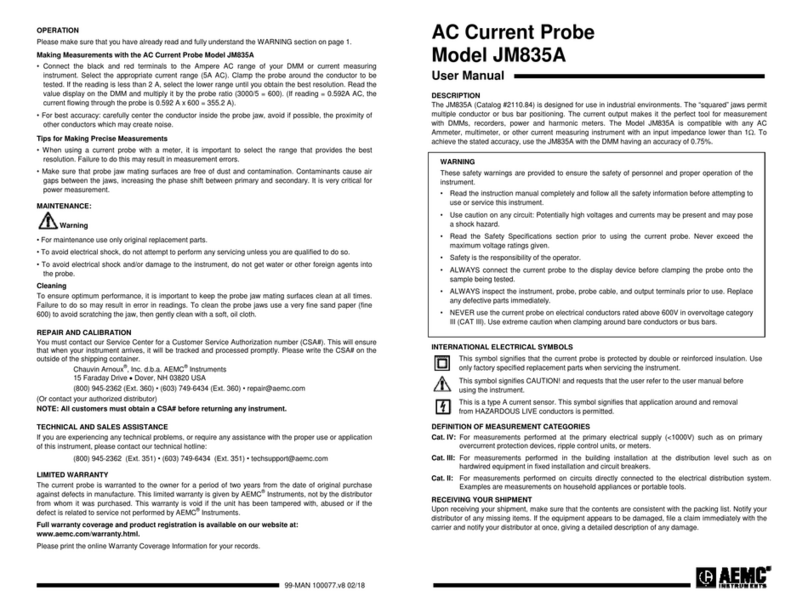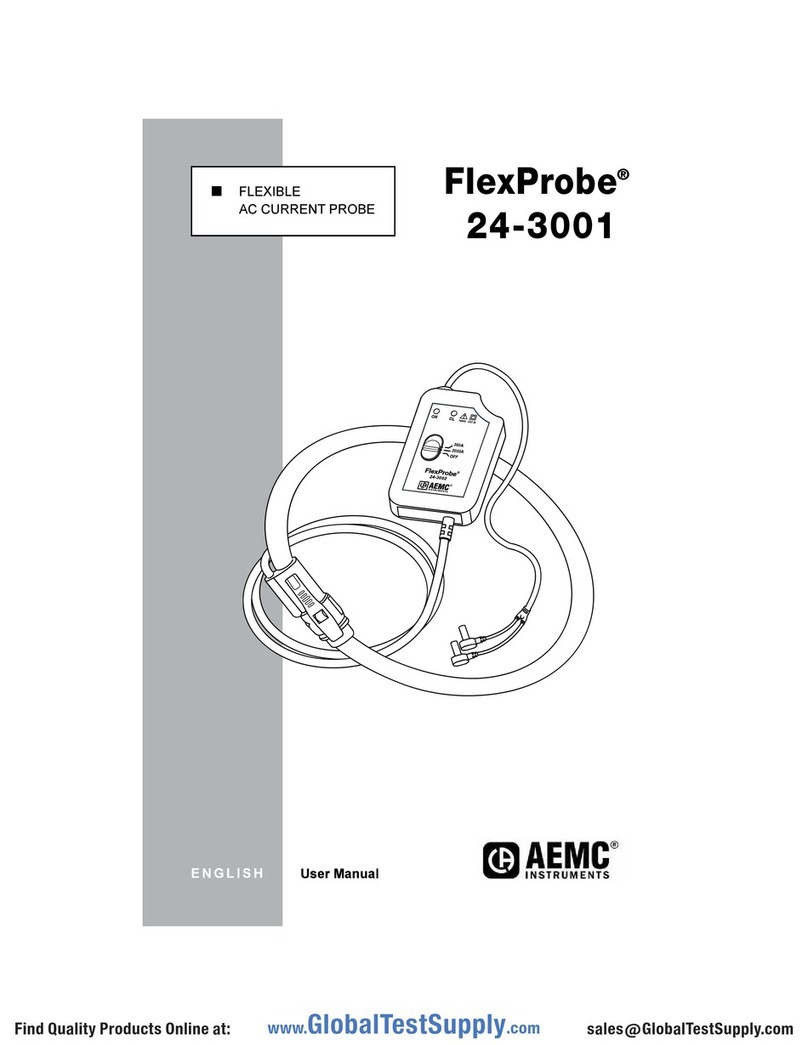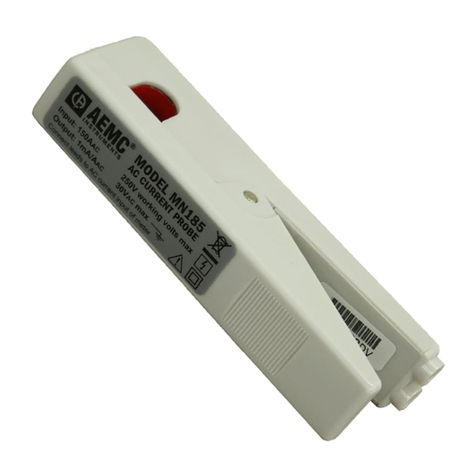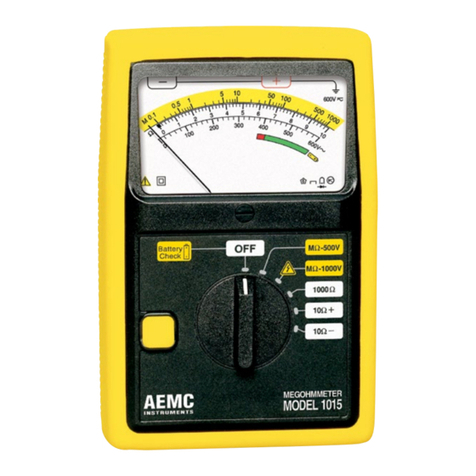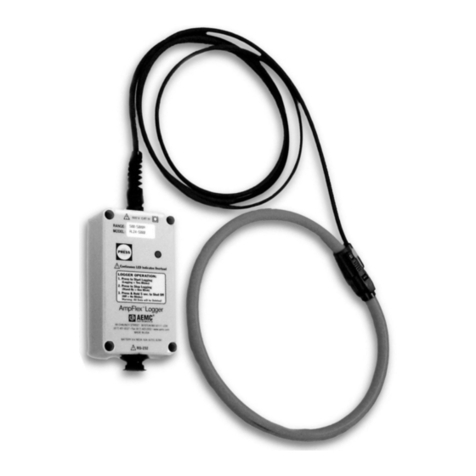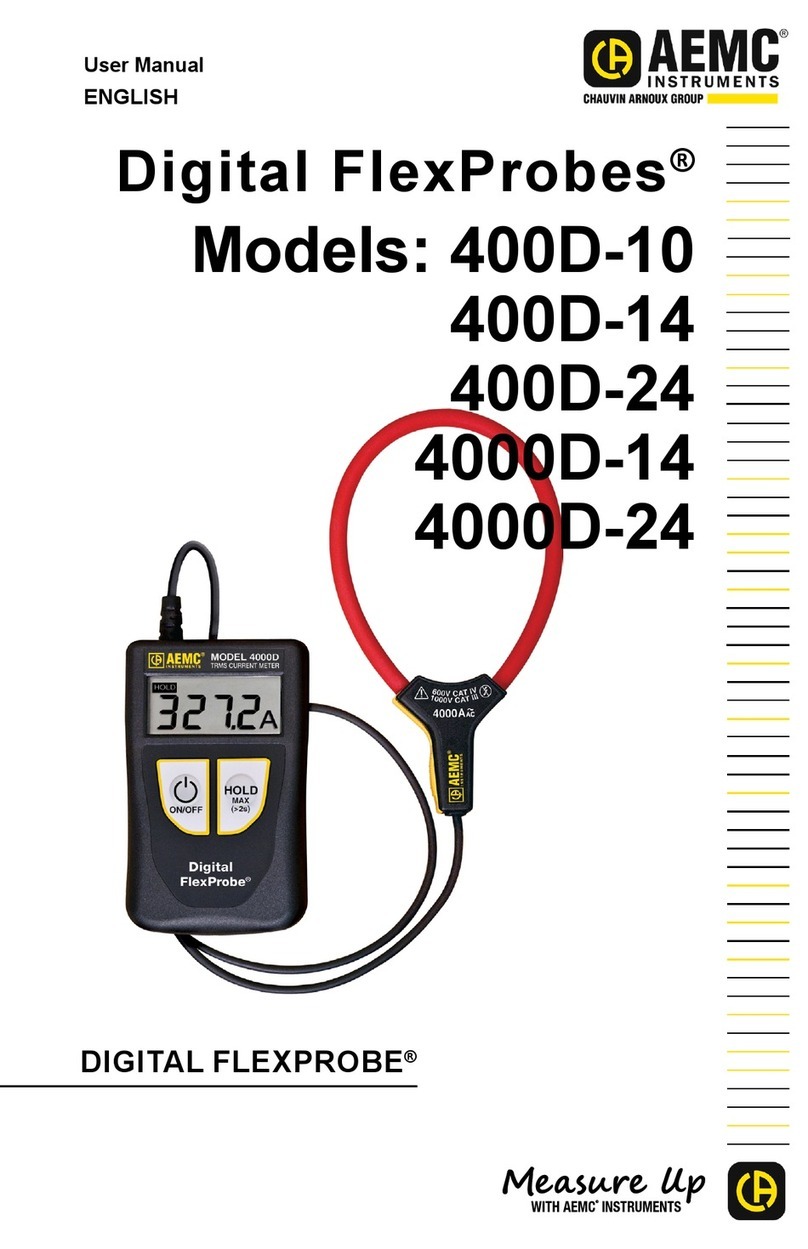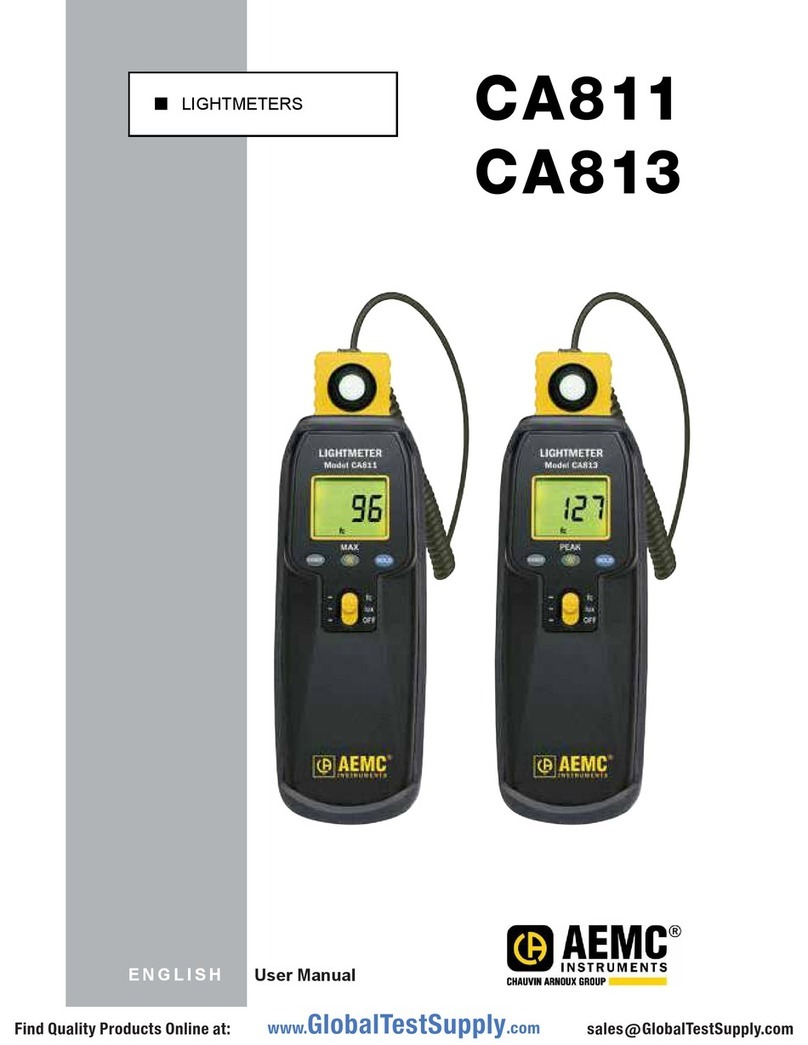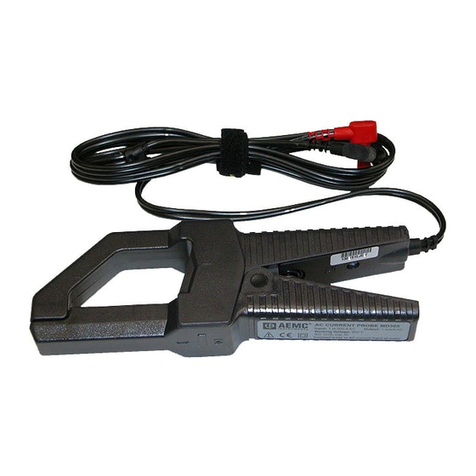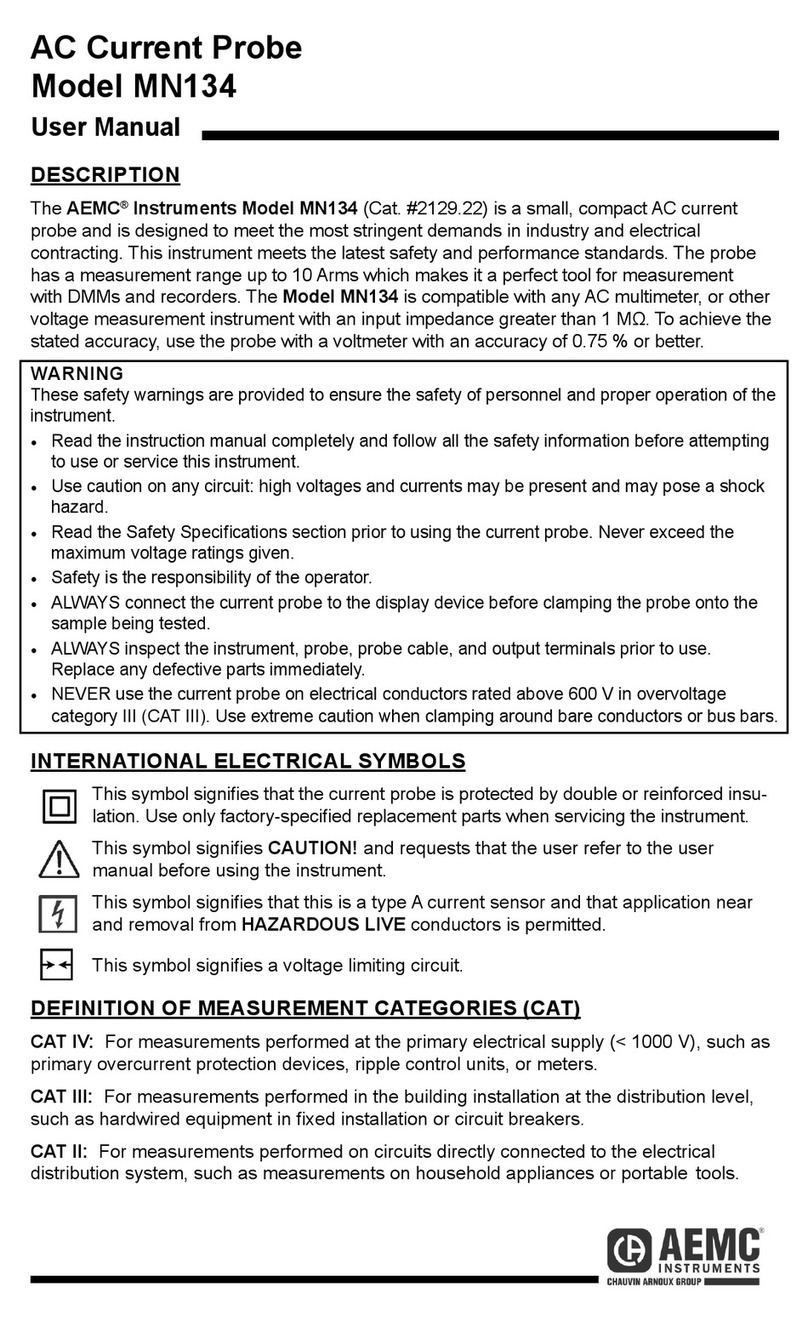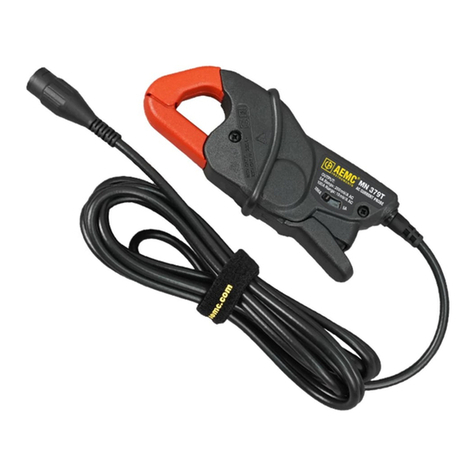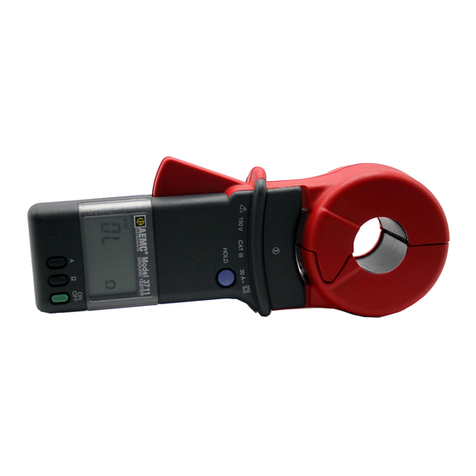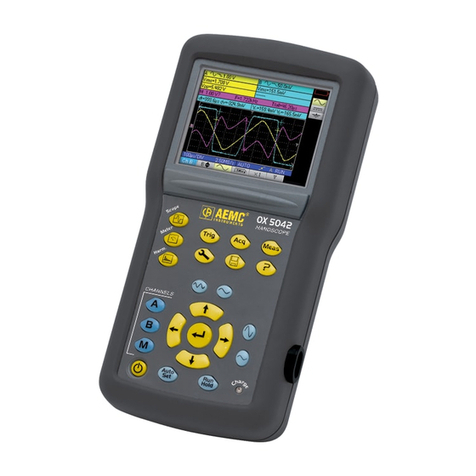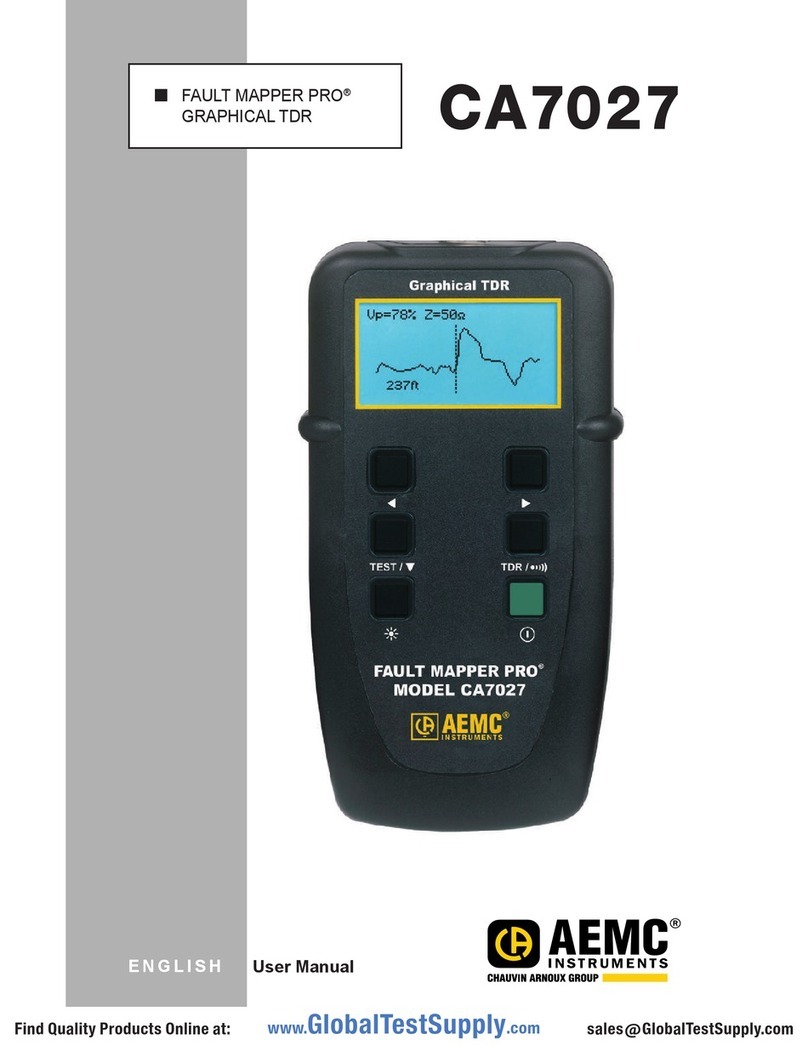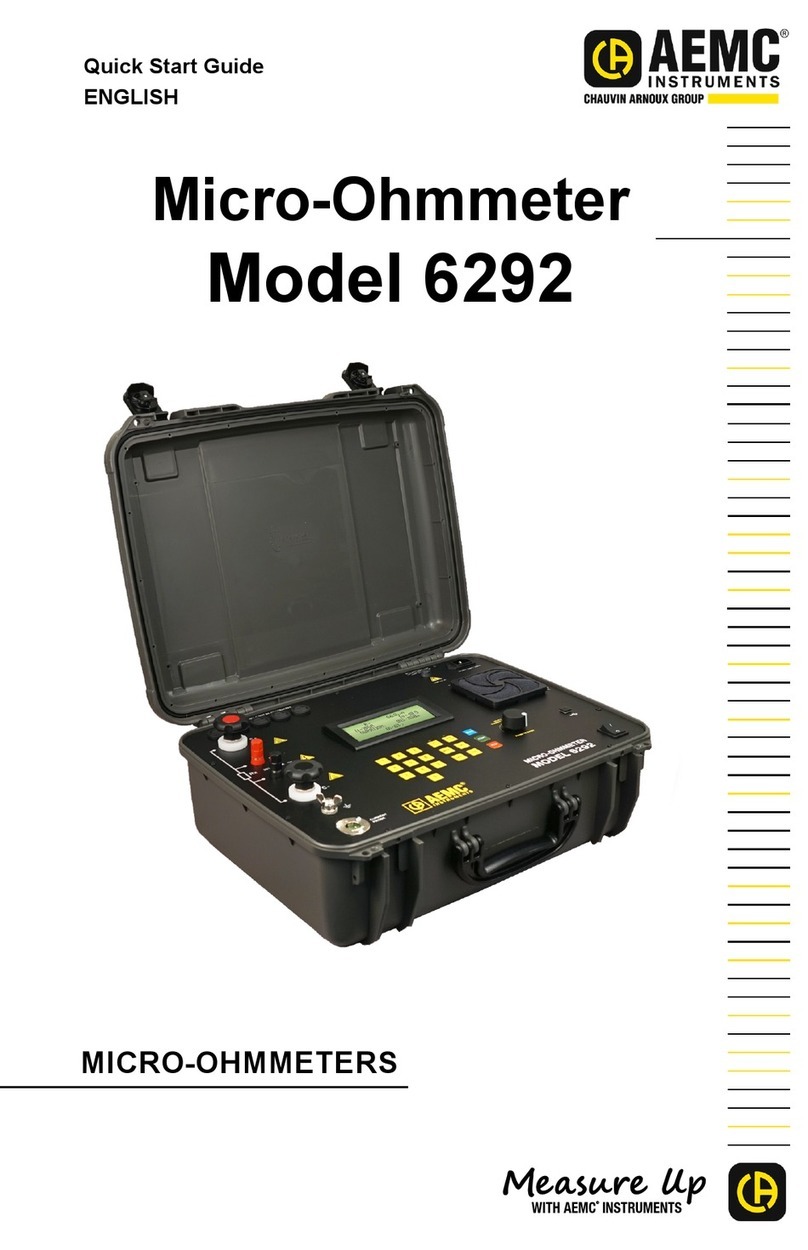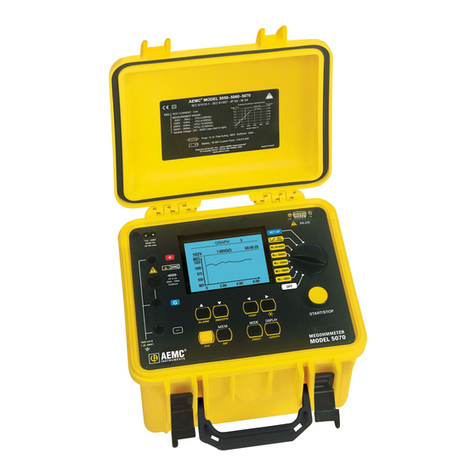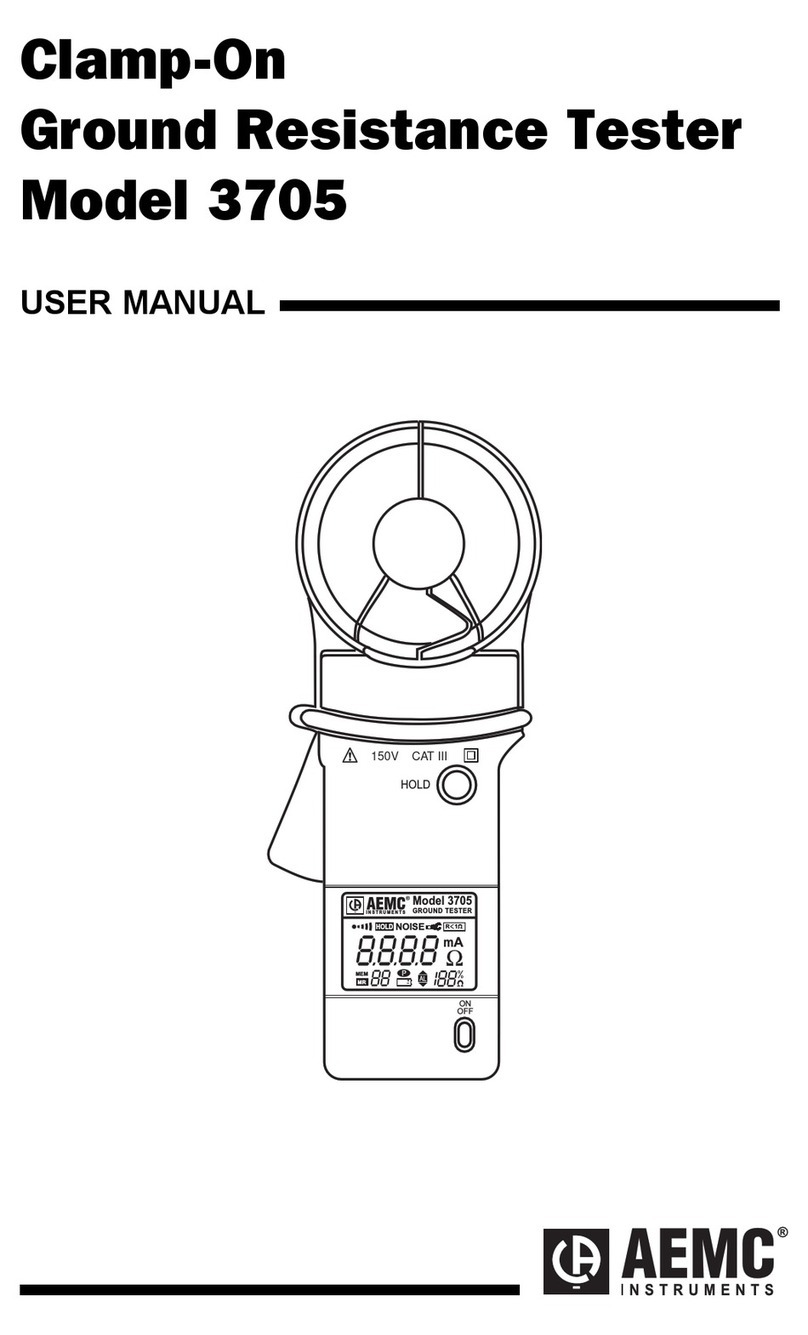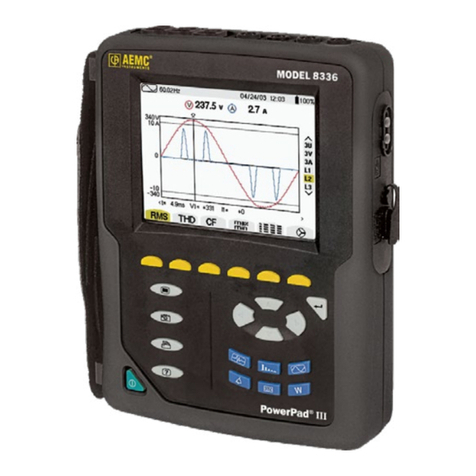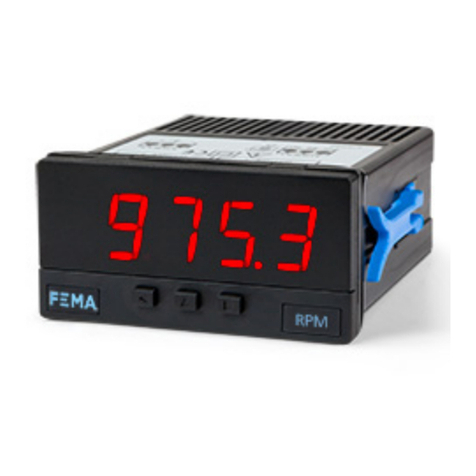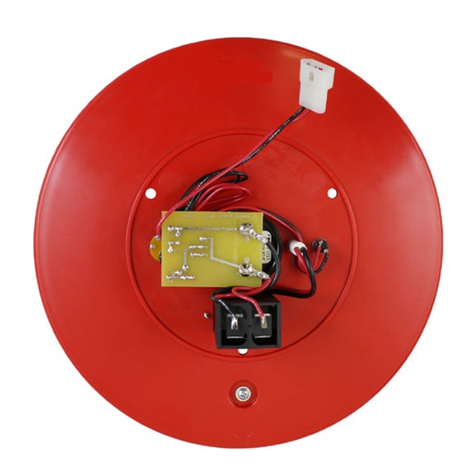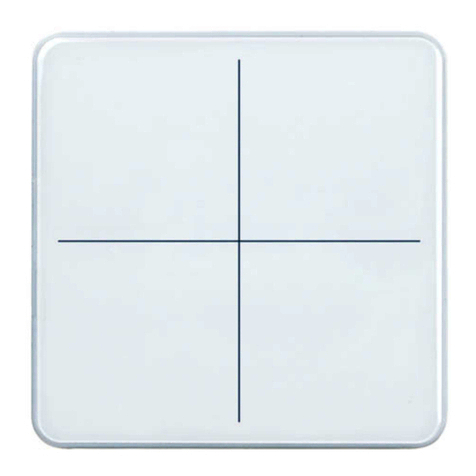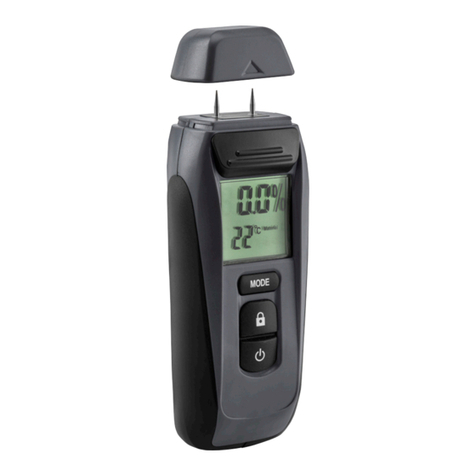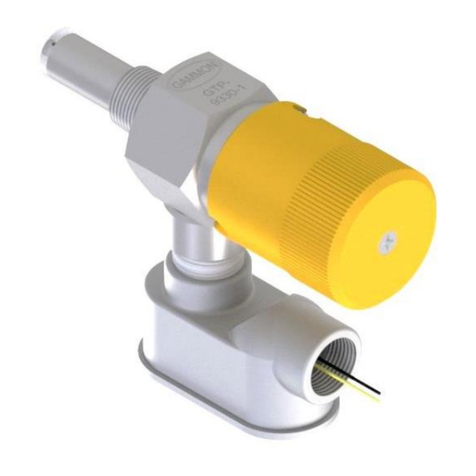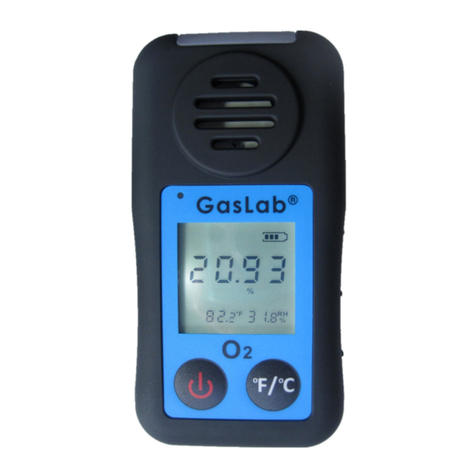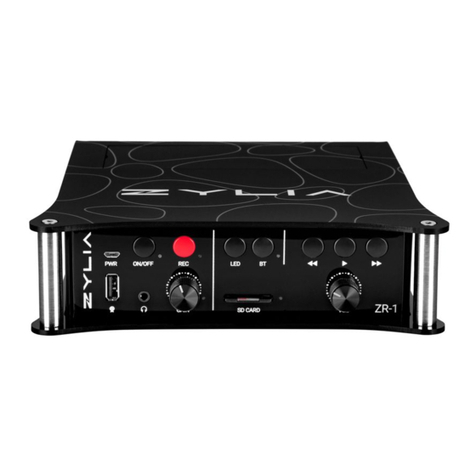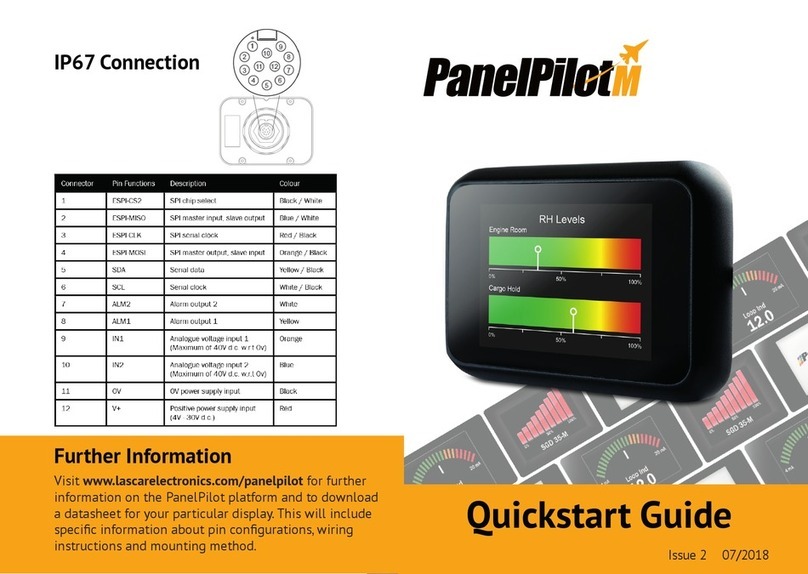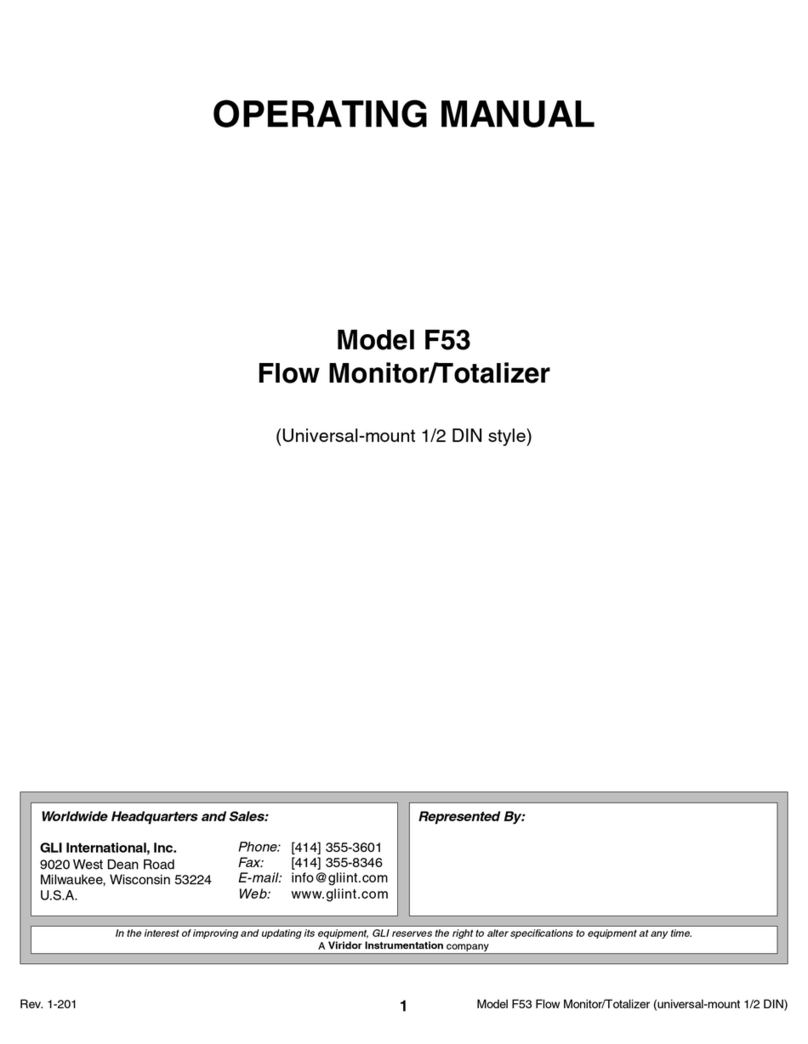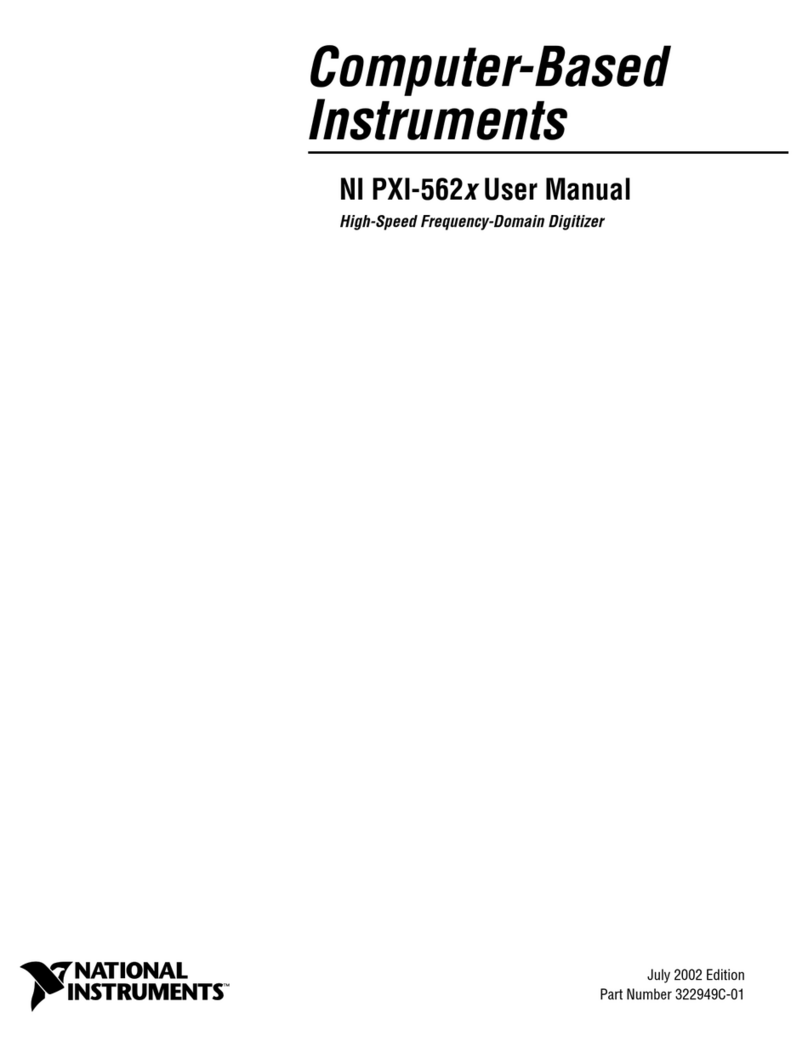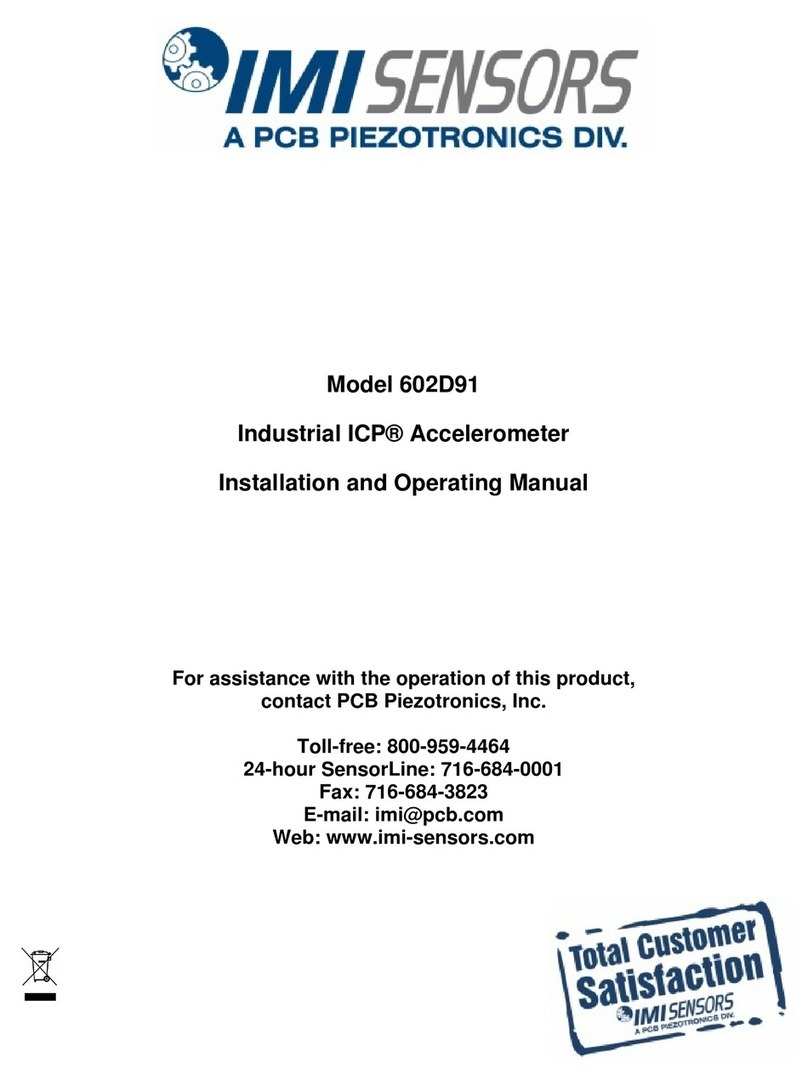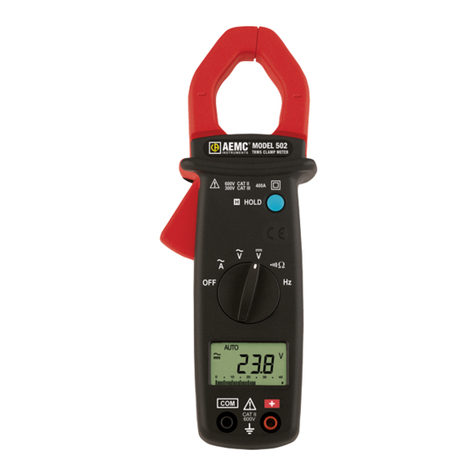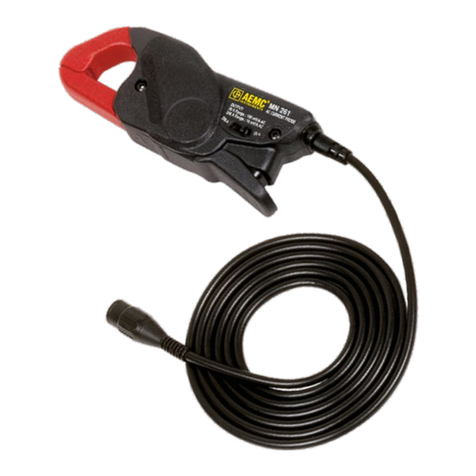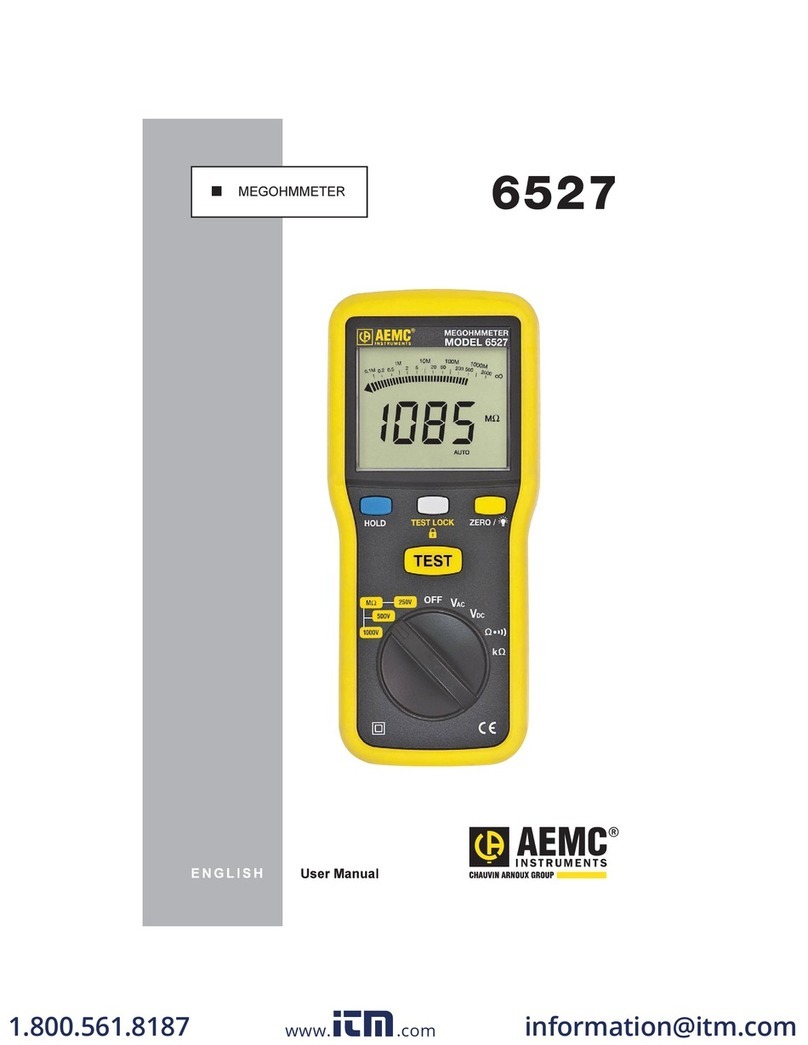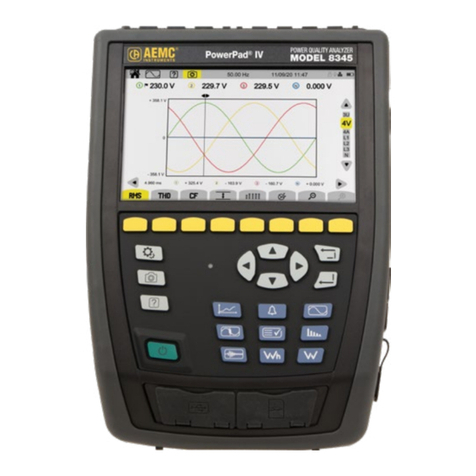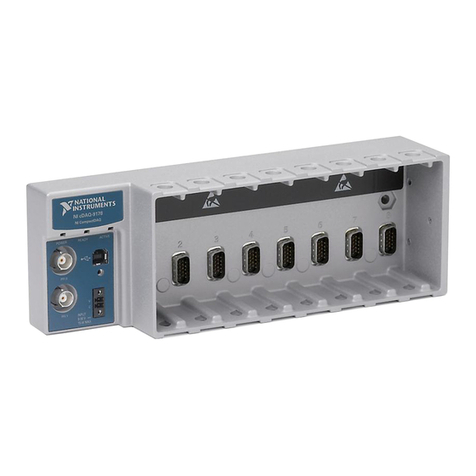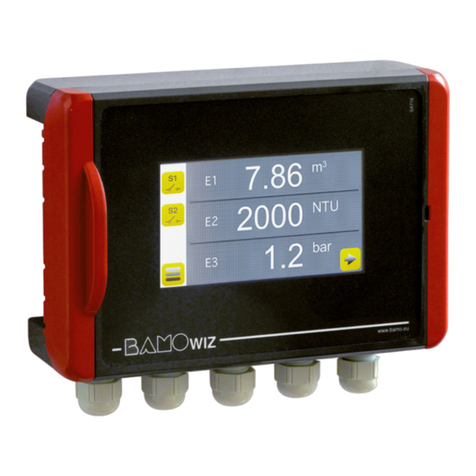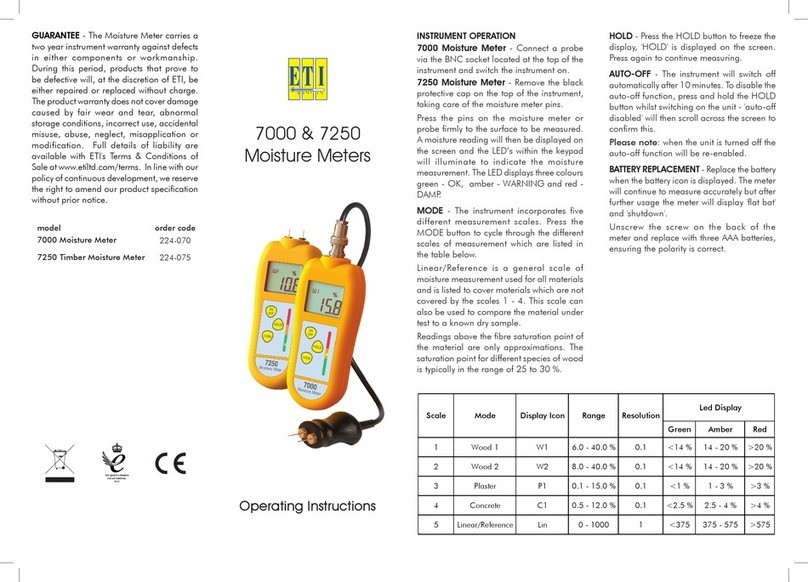
99-MAN 100142.v5 04/11
OPERATION
Please make sure that you have already read and fully understand the WARNING section on page 1.
Making Measurements with the AC Current Probe Model MN290/MN291
• Connect the black lead of the current probe to “common” and the red lead to the DC voltage input on
your DMM or other voltage measuring instrument. The AC current probe has an output of 100 mV DC/A
AC. This means that for 200 A AC in a conductor around which the probe is clamped, 20 V DC will come
out of the probe leads to your DMM or instrument. Select the range which corresponds to the measured
current. If the current magnitude is unknown, start with the highest range and work down until the
appropriate range and resolution are reached. Clamp the probe around the conductor. Take the reading
on the meter and multiply it by 10 to obtain the measured current (e.g, 1000 mV DC reading = 1000 x 10
= 10,000 mA AC or 10 AC)
• For best accuracy, avoid if possible, the proximity of other conductors which may create noise.
Tips for Making Precise Measurements
• When using a current probe with a meter, it is important to select the range that provides the best
resolution. Failure to do this may result in measurement errors.
• Make sure that probe jaw mating surfaces are free of dust and contamination. Contaminants cause air
gaps between the jaws, increasing the phase shift between primary and secondary. It is very critical for
power measurement.
MAINTENANCE:
Warning
• For maintenance use only original factory replacement parts.
• To avoid electrical shock, do not attempt to perform any servicing unless you are qualified to do so.
• To avoid electrical shock and/or damage to the instrument, do not get water or other foreign agents
into the probe
Cleaning
To ensure optimum performance, it is important to keep the probe jaw mating surfaces clean at all times.
Failure to do so may result in error in readings. To clean the probe jaws, use very fine sand paper (fine
600) to avoid scratching the jaw, then gently clean with a soft oiled cloth.
REPAIR AND CALIBRATION
You must contact our Service Center for a Customer Service Authorization number (CSA#). This will
ensure that when your instrument arrives, it will be tracked and processed promptly. Please write the CSA#
on the outside of the shipping container. If the instrument is returned for calibration, we need to know if you
want a standard calibration, or a calibration traceable to N.I.S.T. (includes calibration certificate plus
recorded calibration data).
Chauvin Arnoux®, Inc. d.b.a. AEMC®Instruments
15 Faraday Drive Dover, NH 03820 USA
Tel: (800) 945-2362 (Ext. 360)
(603) 749-6434 (Ext. 360)
Fax: (603) 742-2346 or (603) 749-6309
(Or contact your authorized distributor)
Costs for repair, standard calibration, and calibration traceable to N.I.S.T. are available.
NOTE: All customers must obtain a CSA# before returning any instrument.
TECHNICAL AND SALES ASSISTANCE
If you are experiencing any technical problems, or require any assistance with the proper use or
application of this instrument, please call our technical hotline:
(800) 343-1391 • (508) 698-2115 • Fax (508) 698-2118
Chauvin Arnoux®, Inc. d.b.a. AEMC®Instruments
www.aemc.com
AC Current Probe
Models MN290 and MN291
User Manual
DESCRIPTION
The MN290/MN291 (Catalog #2115.83 and #2115.84) are the latest in compact AC Current probes.
Designed to meet the most stringent demands in industry and electrical contracting, they also meet the
latest safety and performance standards. The probes have a measurement range up to 240 Arms which
makes them perfect tools for measurement with DMMs without AC range, recorders. The Models
MN290/MN291 are compatible with any DC voltmeter, multimeter, or other voltage measurement
instrument that is capable of displaying 100 mV of output per amp of measured current, voltmeter
accuracy of 0.75% or better and an input impedance of ≥1 MΩ.
WARNING
The safety warnings are provided to ensure the safety of personnel and proper operation of the
instrument. Read the instruction completely.
• Use caution on any circuit: potentially high voltages and currents may be present and may pose
a shock hazard.
• Do not use the probe if damaged. Always connect the current probe to the measuring device
before it is connected around the conductor
• Do not use on non-insulated conductor with a potential to ground greater than 600V CAT III
pollution 2. Use extreme caution when clamping around bare conductors or bus bars.
• Before each use, inspect the probe; look for cracks in housing or output cable insulation.
• Do not use clamp in wet environment or in locations that hazardous gases exist.
• Do not use the probe anywhere beyond the tactile barrier.
INTERNATIONAL ELECTRICAL SYMBOLS
This symbol signifies that the current probe is protected by double or reinforced insulation. Use
only factory specified replacement parts when servicing the instrument.
This symbol signifies CAUTION! and requests that the user refer to the user manual before
using the instrument.
This is a type A current sensor. This symbol signifies that application around and removal from
HAZARDOUS LIVE conductors is permitted.
DEFINITION OF MEASUREMENT CATEGORIES
CAT I: For measurements on circuits not directly connected to the AC supply wall outlet such as
protected secondaries, signal level, and limited energy circuits.
CAT II: For measurements performed on circuits directly connected to the electrical distribution system.
Examples are measurements on household appliances or portable tools.
CAT III: For measurements performed in the building installation at the distribution level such as on
hardwired equipment in fixed installation and circuit breakers.
CAT IV: For measurements performed at the primary electrical supply (<1000V) such as on primary
overcurrent protection devices, ripple control units, or meters.
RECEIVING YOUR SHIPMENT
Upon receiving your shipment, make sure that the contents are consistent with the packing list. Notify
your distributor of any missing items. If the equipment appears to be damaged, file a claim immediately
with the carrier and notify your distributor at once, giving a detailed description of any damage.




